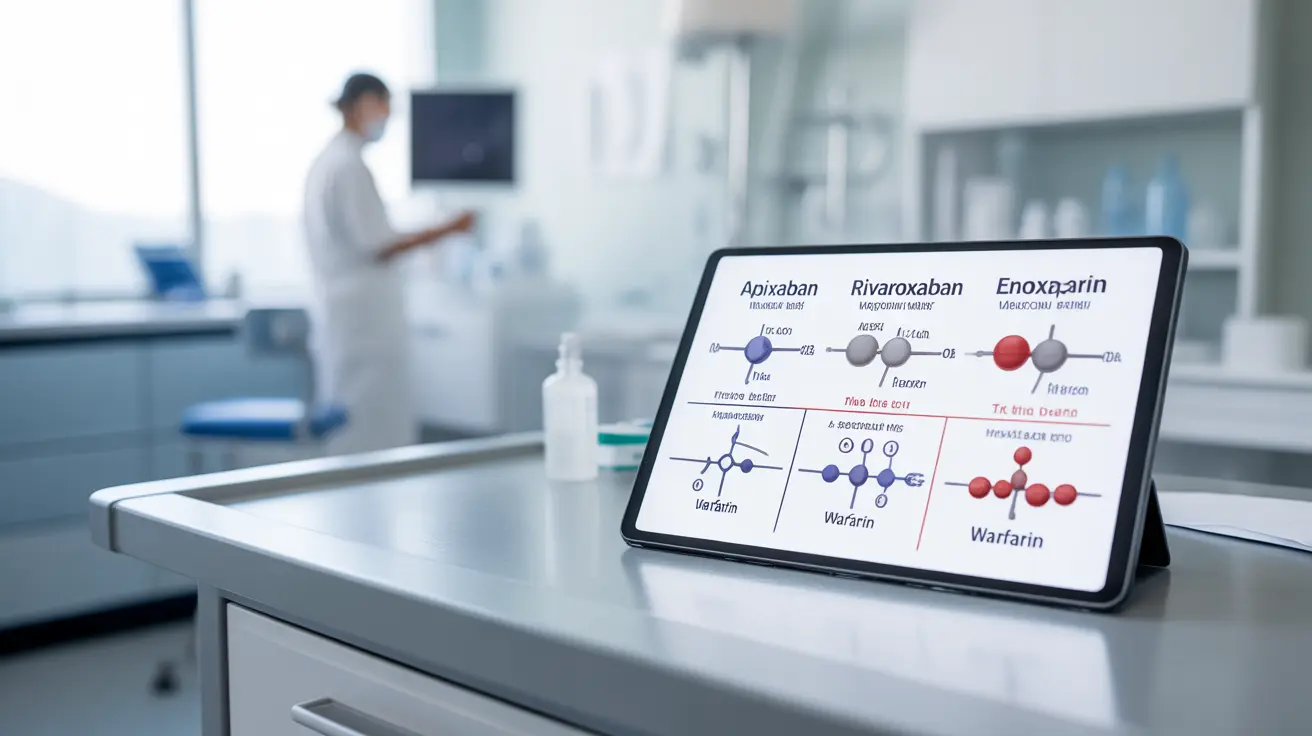For patients requiring blood-thinning medications, having alternatives to warfarin has become increasingly important in modern medicine. While warfarin has been the standard anticoagulant for decades, medical advances have introduced several effective alternatives that offer different benefits and treatment approaches.
This comprehensive guide explores the various warfarin alternatives available today, their mechanisms of action, and important considerations for patients and healthcare providers.
Direct Oral Anticoagulants (DOACs): The Modern Alternative
Direct oral anticoagulants represent the newest class of blood thinners and have revolutionized anticoagulation therapy. These medications work by directly targeting specific clotting factors in the blood, offering more predictable anticoagulation compared to warfarin.
Common Types of DOACs
- Apixaban (Eliquis)
- Rivaroxaban (Xarelto)
- Dabigatran (Pradaxa)
- Edoxaban (Savaysa)
Advantages of DOACs Over Warfarin
- No routine blood monitoring required
- Fewer dietary restrictions
- More predictable dosing
- Faster onset of action
- Lower risk of brain bleeding
Injectable Anticoagulants: Another Treatment Option
Injectable anticoagulants provide an important alternative for specific patient populations, particularly those requiring short-term treatment or unable to take oral medications.
Types of Injectable Blood Thinners
- Low molecular weight heparin (LMWH)
- Dalteparin (Fragmin)
- Enoxaparin (Lovenox)
Special Patient Considerations
Different patient populations may require specific approaches when choosing warfarin alternatives. Factors such as kidney function, liver health, age, and other medical conditions play crucial roles in medication selection.
Kidney and Liver Disease
Patients with kidney or liver problems require careful evaluation before starting any anticoagulant therapy. Some DOACs may need dose adjustments or may be contraindicated depending on organ function levels.
Cost Considerations and Insurance Coverage
The cost of warfarin alternatives can vary significantly. While warfarin is generally more affordable, many alternatives are now available as generics, making them more accessible. Additionally, various patient assistance programs can help manage medication costs.
Frequently Asked Questions
What are the primary alternatives to warfarin for preventing blood clots, and how do they work?
The main alternatives to warfarin include DOACs (like apixaban, rivaroxaban, and dabigatran) and injectable anticoagulants (like enoxaparin). DOACs work by directly inhibiting specific clotting factors, while injectable anticoagulants enhance the body's natural anticoagulant mechanisms.
How do direct oral anticoagulants (DOACs) compare to warfarin in terms of effectiveness and safety for conditions like atrial fibrillation?
DOACs have demonstrated comparable or superior effectiveness to warfarin in preventing strokes in atrial fibrillation patients, with a lower risk of major bleeding, particularly intracranial hemorrhage. They also offer more predictable anticoagulation without the need for regular blood monitoring.
What are the benefits and drawbacks of using injectable anticoagulants like dalteparin or enoxaparin compared to oral options?
Injectable anticoagulants provide rapid anticoagulation and are particularly useful for short-term treatment or in patients who cannot take oral medications. However, they require regular injections and may be less convenient for long-term use compared to oral alternatives.
Are warfarin alternatives safe and effective for patients with kidney or liver issues, and what precautions should be taken?
The safety and effectiveness of warfarin alternatives vary for patients with kidney or liver issues. Some DOACs require dose adjustments or may be contraindicated in severe organ dysfunction. Regular monitoring of organ function and careful dose selection are essential.
How do the costs of warfarin alternatives, such as apixaban or rivaroxaban, compare to warfarin, and are there any financial assistance programs available?
Warfarin alternatives typically cost more than warfarin, but many are now available as generics. Most manufacturers offer patient assistance programs, and insurance coverage has improved. Additionally, the reduced need for regular monitoring with DOACs may offset some cost differences.




